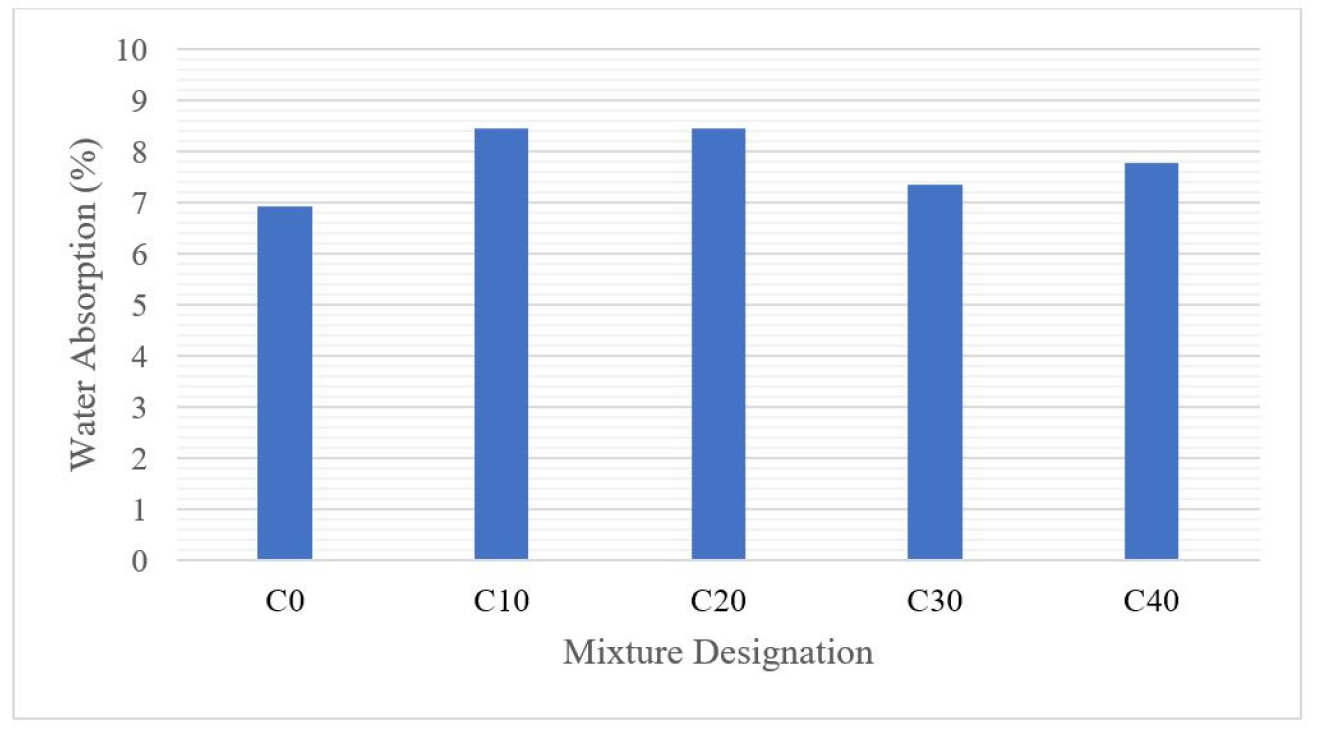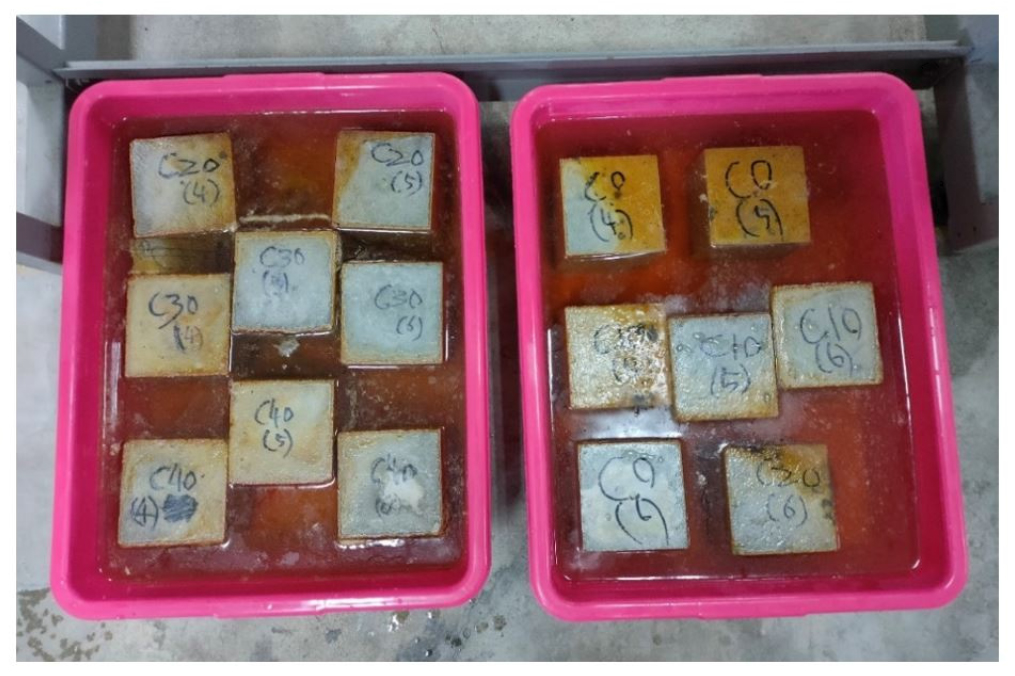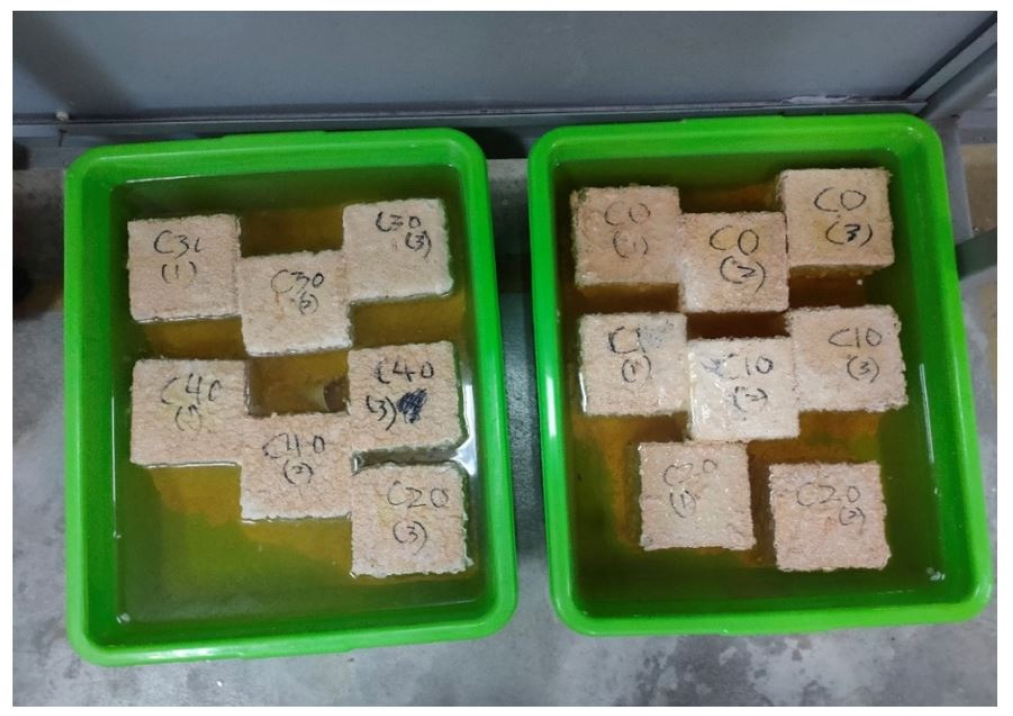Introduction
Methodology
Results and Discussion
Water absorption
hydrochloric acid exposure
sulphuric acid exposure
Conclusion
Introduction
Concrete as a building material is increasingly used in many construction project all over the world. The rising demand for concrete production also causes increase in consumption of raw materials supply system such as aggregate quarrying business, cement manufacturing trade and sand mining industry. Sand being an important mixing ingredient that acts as a filler in concrete internal structure to in to product compact concrete is obtained through mining activities from the river. Excessive exploitation of river sand from its river beds causing several environmental issues such as loss of biodiversity, vegetation is destroyed, disruptions to ecosystem and deformation of riverbeds [1]. The destruction to aquatic life also affects the income of community depending on resources from the river [2]. Several studies have been conducted in the past to address such issues [3, 4, 5]. Therefore, alternative partial sand replacement is necessity to be explored further to overcome the depletion of fine aggregates [6]. In this study, spent garnet as an industrial had emerged as a potential candidate to satisfy those criteria.
Generally, garnet which is an imported material can be applied in industrial purposes such as water filtration granules, water jet cutting, abrasive blasting media and etc. Garnet can be recycled three to five times for blasting then it will no longer able to be reutilized for blasting purposes [7]. These spent garnets are hence unrecyclable anymore and the disposal of such waste garnets can affect the ecological balance [8]. Continuous practice of disposing the spent garnet waste at landfill would require more space to be allocated in future thus limiting the area of land that could be used for other development. In such situation, the utilization of spent garnets as sand replacement for fine aggregates in concrete will be the most ideal solution for sustainable construction and to solve the depletion issue for natural river sand.
Methodology
All the raw materials used for concrete preparation are obtained from local supplier. The water supply used in this research was tap water. Besides, distilled water was used for durability testing to prepare chemical solution as indicated by ASTM C1602/C1602M – 18 [9]. Cement according to BS EN 197-1 [10] standard was used as binder. In this study, fine and coarse aggregates were obtained from local supplier. The spent garnet waste which was obtained from landfill was utilized as sand replacement material at various percentage by weight of sand. All specimens were cast in form of cubes and water cured before testing period. The water absorption test were conducted in compliance with the BS 1881: Part122 (2011) [11]. The resistance of concrete upon exposed to different types of acid were evaluated by immersing it in 2 types of acid solution that is 5% of hydrochloric acid and 5% of sulphuric acid solution for certain duration. After exposure to acid solution, the compressive strength was determined according to the standard in BS EN:12390-3: 2019 [12].
Results and Discussion
Water absorption
Figure 1 shows that the percentage of water absorbed by the concrete specimens ranged between 6 to 9%. The results were acceptable as the ability of absorption for all fine aggregates relatively sufficient in order to obtain the compressive strength required for concrete. In general, the water absorptions of all the specimens are lower compared to the permissible limits of 10% recommended by [13]. The improvement in pore structure enhances the strength of concretes specially for specimens with 20% spent garnets which have water absorption levels similar to the control specimens. This might be due to fine particles of spent garnet; the smaller particle size allowed these fine particles to fill in the spaces and create more compact structure. Researcher elsewhere [14] also reported that the use of spent garnet as partial sand replacement in concrete influences the water absorption of concrete.
hydrochloric acid exposure
The compressive strength of concrete cubes containing spent garnet after 28 days of water curing and also 28 days of 5% HCl immersion was shown in Figure 2. The comparison of the average compressive strength between the specimens after immersion in 5% HCl and the specimens with water immersion were hence recorded.
For concrete cubes that immersed in 5% hydrochloric acid (HCl), the highest compressive strength value was the mix designation of C20 which contains 20% spent garnet. It had the best capacity to withstand hydrochloric acid attack, with a strength value of 30.8MPa, whereas C40, which contains 40% spent garnet, was unable to give greater acid resistance, with only a strength value of 26.0MPa. Figure 3 shows the immersion of concretes in 5% hydrochloric acid solution.
sulphuric acid exposure
The compressive strengths of concrete cubes with and without spent garnet after 28 days of water curing followed by 28 days of 5% H2SO4 immersion were recorded and analysed. Figure 4 shows immersion of concretes specimens in 5% sulphuric acid solution.
The comparison of the average compressive between the specimens after immersion in 5% H2SO4 and the specimens with water immersion, and the average loss (%) of every mix designation were measured. Figure 5 shows the compressive strength of concrete cubes containing spent garnet after immersion in 5% H2SO4.
Concrete cubes that immersed in 5% sulphuric acid (H2SO4), the highest compressive strength value was the mix designation of C20. During the sulphuric acid attack, the average compressive strength for all mix designation concretes were drop drastically compared to immersion in normal portable water curing. C20 with 20% of spent garnet had the most ability to withstand sulphuric acid attack in which it had the highest strength value which was 19.3MPa. Whereas, C40 with 40% of spent garnet unable to provide better acid resistant with lowest strength value of 14.3MPa.
Conclusion
Integration of spent garnet up to 40% produces concrete with water absorption less than 10% enabling it to be classified as good quality concrete. All specimens experience gradual strength reduction upon exposure to acid solution for longer period. Concrete containing 40% spent garnet exhibit the lowest compressive strength of all upon exposure to acid sulphuric solution. Further investigation is required to determine suitable percentage of spent garnet as partial sand replacement in concrete with enhanced strength and durability.









